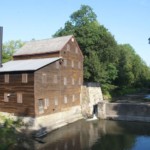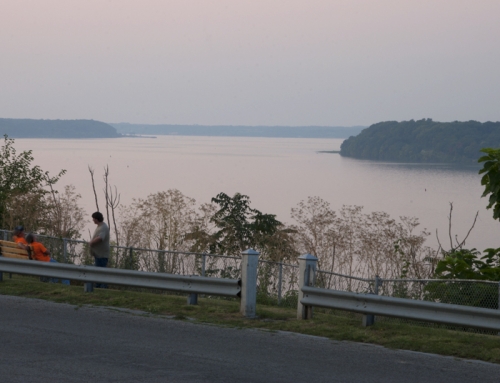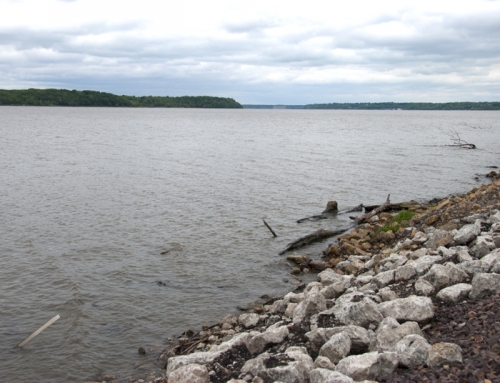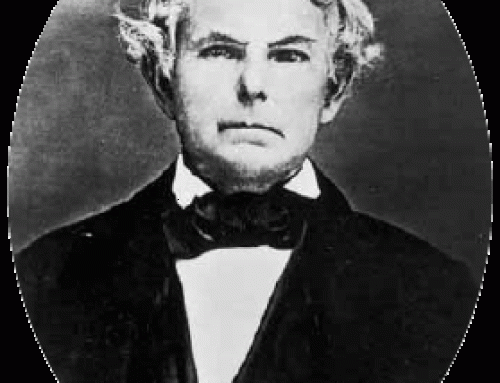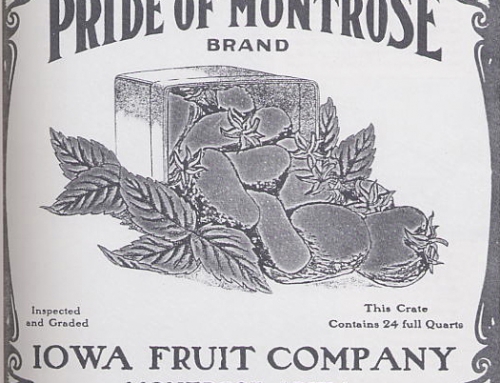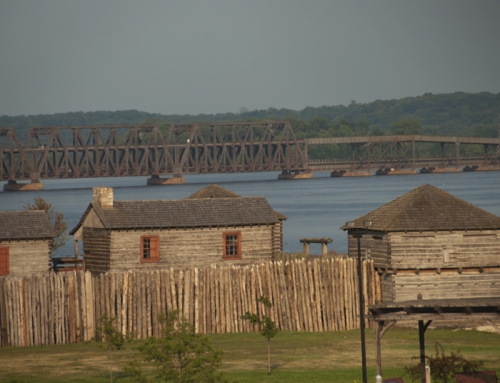History
In 1839, William Chambers platted a village he called Salem but that was soon renamed Fairport. The village would become well known for a robust pottery industry. Elijah Sells, who served as Iowa’s Secretary of State from 1856-1863, founded the first pottery factory. In 1879, Fairport had five pottery manufacturers and two stores, but not much else.
During the summer months, 100-foot long barges carrying 150 tons of Fairport pottery floated along the Mississippi River selling jugs, jars, crocks, churns, flower pots, vases, and ornaments. The barge would get a push from a tow upriver to Lake Pepin, then it would float downriver with the current. The crew was usually a family that lived in a cabin built at the stern of the barge. When they reached town, one of the ways they attracted customers was by offering free treats, like the ocarinas that they gave to boys who helped unload the barge. An ocarina was a small musical instrument that looked like a sweet potato and sounded something like a calliope.
The barge usually sold out by the time it got back to Fairport, so they would reload and continue on down to St. Louis. You can understand how the town earned the nickname Jugtown. The industry gradually fell on hard times by the latter part of the 19th century. In 1869, John Feustel bought the former Russell Pottery. He imported clay from Illinois for his pots, hauling it across the frozen Mississippi in winter. His was the last pottery factory to operate in Fairport.
Exploring the Area
Fairport was (is) also known for the fishery that has been operating for over a hundred years. The US Biological station was established in 1908 and opened officially in 1914 to repopulate the native mussel population that had been decimated by the pearl button industry (centered downriver at Muscatine). In 1929, the station was converted to a warm water hatchery. During World War II, the station housed German prisoners of war. In 1973 Iowa took over the station, using it today to produce bluegill, walleye, largemouth bass, and saugeye to stock lakes and rivers around the state.
Nearby Wildcat Den State Park (1884 Wildcat Den Rd.; 563.263.4337) has hiking trails that wind through the forest and bluffs. The park is also home to the Pine Creek Grist Mill, built by Ben Nye in the mid-1800s.
Entertainment and Events
Festivals
The annual Heritage Days and Buckskinners Rendezvous takes place in Wildcat Den State Park, where you can take a step back in time, no buckskin required (3rd weekend in September).
Looking for more places to visit along the Mississippi River? Check out Road Tripping Along the Great River Road, Vol. 1. Click the link above for more. Disclosure: This website may be compensated for linking to other sites or for sales of products we link to.
Where to Sleep
Camping
Fairport Recreation Area (1884 Wildcat Den Rd.; 563.263.3197) is right next to the river; it has 42 campsites with water and electricity and a shower house.
Shady Creek Recreation Area (3550 State Highway 22; 563.262.8090), also located on the river, has 53 sites with water and electric and a shower house (open May to October).
Wildcat Den State Park (1884 Wildcat Den Rd.; 563.263.4337) has 28 campsites in a shady area, half with electricity; no showers.
Where to Go Next
Next town upriver: Montpelier
Next town downriver: Muscatine
Community-supported writing
If you like the content at the Mississippi Valley Traveler, please consider showing your support by making a one-time contribution or by subscribing through Patreon. Book sales don’t fully cover my costs, and I don’t have deep corporate pockets bankrolling my work. I’m a freelance writer bringing you stories about life along the Mississippi River. I need your help to keep this going. Every dollar you contribute makes it possible for me to continue sharing stories about America’s Greatest River!
©Dean Klinkenberg, 2024, 2021, 2018,2013,2011
